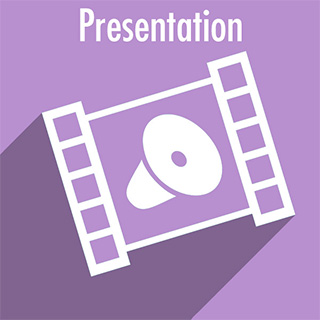What types of accommodations are commonly used for students with disabilities?
Page 5: Presentation Accommodations
 To review, accommodations are changes to educational environments or practices designed to help students with disabilities overcome learning barriers that result from their disabilities. Presentation accommodations change the way that instruction, directions, and information are presented. These accommodations allow a student with a disability to access information in ways other than standard visual or auditory means such as by reading or listening.
To review, accommodations are changes to educational environments or practices designed to help students with disabilities overcome learning barriers that result from their disabilities. Presentation accommodations change the way that instruction, directions, and information are presented. These accommodations allow a student with a disability to access information in ways other than standard visual or auditory means such as by reading or listening.
They provide support that allows students with disabilities to access the same instructional opportunities as students without disabilities; however, keep in mind that presentation accommodations:
- Do not change the expectations for learning
- Do not reduce the requirements of the task
- Do not change what the student is required to learn
The table below offers examples, though by no means an exhaustive list, of presentation accommodations that address some of the common barriers or challenges students experience when they access learning.
| Presentation Accommodations | |
| Common Barrier | Example Accommodations |
| Decoding text |
|
| Comprehending text |
|
| Understanding information presented orally |
|
| Remembering information |
|
| Identifying key information |
|
| Staying focused or maintaining attention |
|
| Seeing standard text |
|
| Hearing information presented orally |
|
| Holding materials |
|
Several of the accommodations listed in the table above are also instructional strategies or interventions, including advance organizers, previewing vocabulary, graphic organizers, and study guides. How can teachers tell the difference between the two when they plan instruction for an individual student? As outlined in the table below, one key difference is the purpose for which each is used.
| Accommodation | Instructional Strategy or Intervention | |
| Definition | Adaptation or change in practices or educational environments (e.g., the way in which information is presented) | Instructional strategy or intervention (e.g., a reading comprehension strategy) |
| Purpose |
Addresses a barrier that results from the disability
Allows students with disabilities to access learning opportunities equivalent to those of students without disabilities (i.e., levels the playing field) |
Addresses a skill or knowledge deficit but does not specifically address a barrier or increase access
Improves the performance of most students with or without disabilities |
| Example: Advance Organizer | Jayla has an auditory processing disorder and has difficulty following the information presented in class. The teacher provides an advance organizer to help her attend to the key points during lectures and class discussions. This helps address the barrier associated with Jayla’s auditory processing disorder. | Each week, Ms. Britton provides her science class with an advance organizer outlining the main points of her instruction. By doing so, she hopes to improve all of her students’ comprehension of the instruction, Jayla’s included. |
Following are examples of presentation accommodations teachers can implement to help students access learning.

Kaden
Age: 10
Disability: attention deficit hyperactivity disorder (ADHD)
Kaden is an energetic 10-year-old who often becomes distracted by what is going on around him and has difficulty identifying main points during instruction. To address Kaden’s challenges, his teacher gives him a graphic organizer, allowing him to better follow her instruction.

Rae
Age: 15
Disability: learning disability (LD)
Rae has difficulty identifying and remembering important information. For this reason, any time her teacher uses a handout in class, she highlights key information (i.e., a visual cue) on Rae’s copy.

Cierra
Age: 6
Disability: autism spectrum disorder (ASD)
Cierra has difficulty comprehending information presented orally. To support her, the teacher provides diagrams and pictures (i.e., alternate format) to help her remember and follow classroom procedures, such as washing hands before lunch and walking down the hall to the cafeteria.
Keep in Mind
It is possible to bundle accommodations within the same category (e.g., two presentation accommodations) or from different categories (e.g., presentation and setting accommodations). However, teachers might want to start by implementing just one accommodation. Doing so will allow the teacher to collect data about that single accommodation, evaluate its effectiveness, and determine whether it is practical for use in the classroom. After effectively implementing one accommodation, the teacher can then implement another that also might benefit the student.